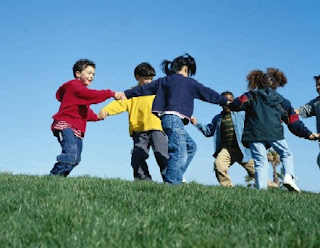UNIT 1: GAMES
PRESENTATION DAY 25/02
Today we had the presentation of the subject. I have always really liked sports and physical education so I really wanted to see what the classes and the dynamics would be like. I really liked how the sessions were organized and I really want to start. I still haven't decided on the speciality I want to do so this subject may help me decide!
We have been proposed to create a personal challenge to be met throughout the course. It is a very useful tool to ensure that the child will do a minimum of sport or movement per week.
CLASS 2/03
Today I have learnt the importance of physical education in primary schools. Although it may seem like one of the subjects with less weight in the development of children, it is just the opposite. Games bring children together even if there are barriers between them (such as language or not getting along). They develop intellectual and emotional abilities as well as social skills. For this reason, the games must be safe, variable (adapt it to new contexts), inclusive (where all children can participate equally even if they have physical difficulties) and modifiable (rules,levels…)
To understand these four main concepts that games must have we played the following games:
Red rover, red rover / sacks / cops and thieves / mymics
Those game were very easy to follow and there were no winners or losers, but being in a team gave importance to teamwork and to being in continuous movement all the time (for example, in cops and crooks when you were caught you had to do squats until they saved you, so the children were in continued movement and had an extra motivation why they didn't want to be caught).
As a child I liked physical education a lot and now even more knowing all the benefits it has and how good it can make children feel!
CLASS 9/03
In this session, we became the teachers and we had to create and explain a game to our classmates.
Throughout the session we have been playing several games (with which I have enjoyed a lot) that worked on the aspects that we had learned last week. All the games were modifiable (difficulty, level...), inclusive (players were not eliminated, they could always return to the game), safe and variable (they could be adapted to different physical difficulties).
We played games where you had to run and be in constant movement (such as the ten passes), games where teamwork was worked on (groups of 5 and 6 people had to cross the gym with two hoops, without being able to touch the floor)... In short, I learned and enjoyed each of my classmates' games a lot.
On the other hand, the game that my group prepared liked the companions but they suggested some improvements or modifications. For example:
-That there was a ball to kill and another of a different color or size to save the companions.
-Every time a player hit his partner with the ball above the waist, he was "eliminated", that is, he had to be saved to return to the game. In this way we encourage children not to throw the ball in the face of their peers and avoid future damage.
-If you get eliminated and do 10 Jumping Jacks before they save you, you save yourself. So if there is a child who does not like him, he can always return to the game even if no one saves him.
-As the game progresses or if we see that with a ball people do not run, new balls can be introduced.
CLICK HERE TO SEE THE DOCUMENT


Comentarios
Publicar un comentario